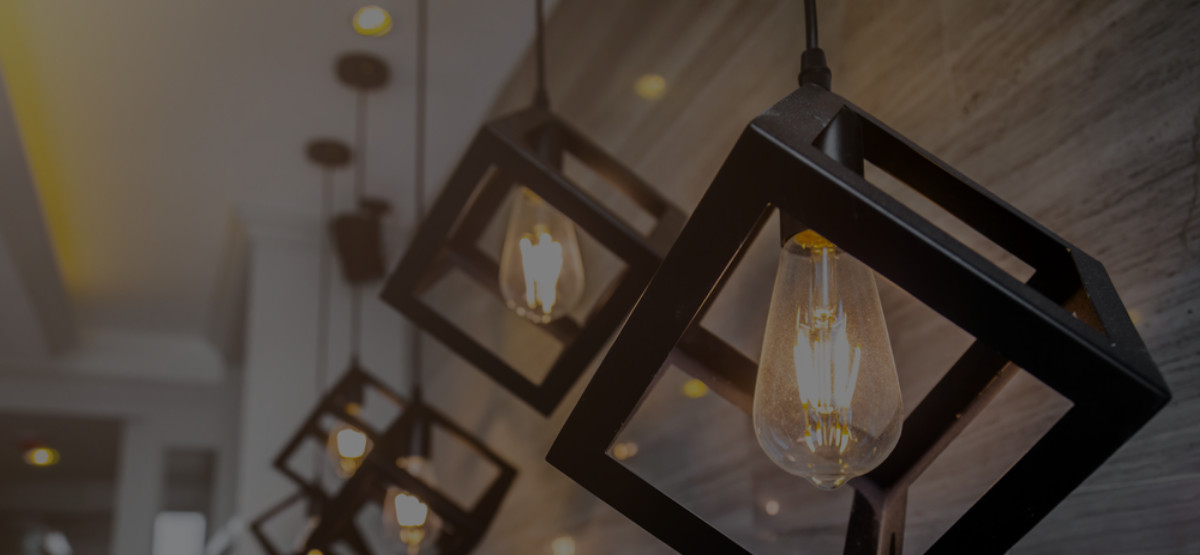Lighting is an absolutely essential component of any interior space, and can have a strong, immediate effect on a room’s atmosphere. The right lighting can be transformative, improving the quality of life within the space and elevating your work as an interior designer, while the wrong lighting has the potential to make a space feel smaller than it is, as well as having a negative impact on your client’s mood.
As a design professional, your clients will seek your expertise as they choose lighting for each room in their home. It is imperative, therefore, to ensure that you are knowledgeable about lighting fixtures that benefit the earth as well as your client’s budget. This is where energy-efficient lighting comes in.

Performance standards for lighting in both Canada and the U.S have changed over the past few years, so being up-to-date on these standards is extremely important, as well as having an overall understanding of energy-efficient lighting. Read on for our helpful guide, including the options available, common misconceptions, and which lights to use in certain rooms within the home.
What is Energy-Efficient Lighting?
When it comes to reducing greenhouse gas emissions, increased performance standards have come into effect for lighting over the past few years. Incandescent bulbs have been switched to energy-efficient lightbulbs in an effort to save energy.
So, what exactly are energy-efficient lightbulbs? We’ve always chosen our lightbulbs by watts. But watts actually measure the amount of energy required, while lumens measure the amount of light produced. New regulations dictate that we now measure by lumens instead of watts—although you’ll still see watts listed on lighting packages (they’ll just be much lower).

Energy-efficient lighting options include compact fluorescent lightbulbs (CFLs), halogen bulbs, and light emitting diodes (LEDs). From these three types, LEDs are the most popular, even more so than fluorescent lights! And it’s no wonder—LED bulbs have a similar light quality to traditional lights, use less energy than CFLs, and are long lasting.
Over the last three years, these three lightbulb options have become the new minimum energy performance standards for light bulbs.
Common Misconceptions Regarding Energy-Efficient Lighting
As with any utility that claims to be a better environmental choice, there are often misconceptions about what the product contains and its overall safety. Here, we break down some facts:
Price:
Energy-efficient lighting tends to be more expensive than traditional incandescent bulbs, so many people choose to bypass these options. However, newer energy-efficient bulbs, such as halogen lights, CFLs and LEDs cost less to operate, which will actually save your client money over the life of the bulb! Newer bulbs will last longer than traditional bulbs, so they will not need to be replaced as often.

Safety:
Due to the fact that these types of bulbs save on energy, a common misconception is that there are large quantities of hazardous chemicals present within the bulbs. CFLs do contain a small amount of mercury, but it is much less than the mercury found in some types of batteries, and instructions with the bulbs state that they should be properly disposed of due to their mercury content (specifically, recycled so they do not end up in a landfill).
Currently, CFLs are being phased out, due to their mercury content, while halogen and LED light bulbs meet lighting standards, and are mercury-free.
Benefits:
Although energy-efficient lighting options have been available for years, there is still skepticism surrounding their benefits. CFLs are extremely long lasting, with a lifespan of 100,000 hours. They will also reduce your client’s electrical bill by 90%, even though they may cost slightly more to purchase, and are much harder to break than incandescent bulbs.
These are just some of the benefits of energy-efficient lighting. Ultimately, less electricity is used with these bulbs which reduces greenhouse gas emissions, making a huge difference in the environment.
How to Use Energy-Efficient Lighting

LEDs and CFLs can be used in different ways throughout the home, and there are certain areas in which each option can enhance the space best.
LED lights have a versatile color range which includes natural white, warm white, cold white, and amber! This type of light is ideal in a workspace environment such as a kitchen or office, as it creates an atmosphere of alertness and energy. This type of bulb also works well over a desk, as it is focused and bright.
CFL lights, by contrast, are better suited to a space such as a living room or bedroom, as they emit a cooler tone. These are relaxed spaces, so having a bulb that promotes tranquility is a great choice.
